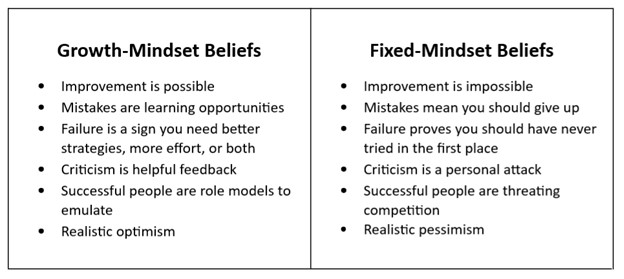
If you had asked me three years ago if I could do 30 push-ups a day, I would have simply said, “No.”
I was too weak, and I had a shoulder injury.
But the correct answer, it turns out, would have been, “Not yet.”1 This month, I am doing 30 push-ups a day.
It all began 30 months ago when I decided to try doing just one push-up per day. That worked, so in the next month, I did two push-ups per day. And every month since, I’ve added one additional push-up.
The progress I’ve made demonstrates the power of patience, long-term thinking, and running little experiments on yourself. It’s also a perfect example of realistic optimism.
Optimism, Pessimism, and Realism
How should you think about the future?
Should you be pessimistic or optimistic? Should you keep your dreams in check or reach for the stars? Is it wiser to focus on what could go wrong or imagine what might go right?
There are valid reasons to favor any of these approaches. There are times when pessimism seems smarter than optimism, but there are also times when the opposite is true. And perhaps the most important thing to be is realistic.
These are not, however, black-and-white categories. There’s actually a spectrum of ways to think about the future:
![]()
Being Unrealistic is Unhelpful
On the far left we have unrealistic pessimism, which is overblown negative thinking. When people imagine that all sorts of catastrophes will ensue from a minor setback, they are irrationally pessimistic. This is plainly unhelpful.
On the far right, we have unrealistic optimism, which is unrestrained positive thinking. When people believe that only good things will come to them because the entire universe is conspiring to ensure that they’re wildly successful, they’re irrationally optimistic. This, too, is unhelpful.
In the middle of the spectrum, we find healthier approaches, grounded in reality.
Realistic Pessimism
Realistic pessimism takes an accurate assessment of reality and imagines probable outcomes, but it pays special attention to negative outcomes, giving them extra weight. This approach can be very helpful in certain careers where risk-assessment is critical, such as loan officers, building inspectors, and surgeons. And just about anytime safety is a concern, erring on the side of caution is wise.
However, when it comes to personal growth and career trajectory, realistic pessimism is problematic.
Realistic pessimists are afraid of taking risks, afraid of trying new things, afraid of leaving their comfort zone. They foresee obstacles, but they don’t foresee themselves finding ways around those obstacles. They see their own abilities and the abilities of others as fixed. They fail to recognize that by struggling, people can learn and improve and thereby expand the set of options that is realistically possible. Their view is limited to only what is possible right now, so they fail to imagine what might become possible later.
As a result, they remain stuck, inhibited by their own pessimism, which has become a self-fulfilling prophecy.
Realistic Optimism
Realistic optimism is, for most purposes, a better approach.
Realistic optimists also take an accurate assessment of reality and imagine probable outcomes. But because they do not give the negative outcomes special weight, they are unburdened by loss-aversion and risk-aversion. They do foresee obstacles, but they also foresee themselves finding workarounds.2 And when things get hard, they don’t give up. They roll up their sleeves and start digging for solutions.
Most importantly, realistic optimists believe in their capacity for growth. They know that struggle makes you stronger. They imagine what could become possible, and they work hard to make it a reality, allowing them to tap into their incredible human potential.
Hard Work
What really sets realistic optimism apart from its neighbors on the spectrum is that it both inspires and depends upon hard work. Realistic optimists believe that they can succeed, which encourages them to try, but they also know that persistent effort is the only way to succeed, so they work very hard.
Unrealistic optimism – the stuff of vision boards and the so-called “law of attraction” – discourages hard work. If all you have to do is imagine what you want in order to get it, why put in any effort? If all it takes to succeed is to believe you’re going to succeed, why try? The unscientific self-help gurus who peddle this crap are certainly selling an appealing idea. Who wouldn’t want to take the easy road to wealth and happiness? The only problem is the easy road doesn’t exist.

Realistic pessimism also discourages hard work, but in a more subtle way. If success is very unlikely, then why should you bother trying? If years of hard work will be all for naught because of a looming, unbreakable obstacle, then you’d be a fool to put in all that effort in the first place.
Realistic pessimism causes you to believe the excuses your mind generates. This actually has an odd sort of appeal: It encourages laziness. Choosing to put in hard work toward your goal without any guarantee of success is a difficult choice to make. It’s so much easier to just stay on the couch and watch another episode. In the long run, however, this lifestyle is very unsatisfying.
Realistic Optimism and Having a Growth Mindset
While realistic optimism is a form of positive thinking, it is radically different from what most people think of as positive thinking. Realistic optimism comes to us from the scientific field of positive psychology. It is grounded in modern neuroscience and supported by rigorous research.
In particular, realistic optimism aligns very well with a growth mindset. Stanford researcher and bestselling author Carol Dweck has outlined the distinction between a “growth mindset” and a “fixed mindset.”3 Here’s a breakdown:

The foundational belief of the growth mindset – that improvement is possible – has been shown scientifically to be true, while the fixed-mindset belief that improvement is not possible is false, and only seems to be true because it can operate as a self-fulfilling prophecy.
Deliberate practice has been widely shown to be the way to walk the mastery path for any skill.4 And clever strategy, when combined with hard work, is a force to be reckoned with. Things may be hard now, but you can build momentum, and they will get easier.
Furthermore, the science of neuroplasticity demonstrates the human brain’s amazing capacity to adapt by growing new connections. If you repeatedly do something, your brain becomes more adept at performing that action. If you challenge yourself, your brain grows stronger in order to meet the challenge.

As realistic optimists push themselves and search for better techniques, they become better and better, and outcomes that were previously out of reach become all but inevitable.
Changing Your Mind is Hard
Funny enough, a lot of people have unrealistic optimism about growth mindsets. They believe the growth mindset is a cure-all for academic and self-esteem problems, and they believe that a growth mindset can be instilled in people quickly with minimalist interventions. These beliefs are wrong and unhelpful.
They lead educators to focus exclusively on growth mindsets while ignoring all of the other important factors that lead to success. They lead schools to shell out money for speakers who will supposedly teach hundreds of kids to have a growth mindset over the course of a 50-minute assembly. They lead parents to believe that their teenagers will magically shift from a fixed mindset to a growth mindset because the parents have started praising process and effort rather than talent and intelligence. Such interventions aren’t harmful, and might even be minimally helpful, but they’re not nearly enough.5,6
Changing a mindset is difficult. It takes time and a great deal of effort. It has to be approached from many angles. Hearing a speaker at school one time or experiencing a subtle shift in parental praise isn’t going to make much difference. Growth mindsets are helpful, but cultivating them requires patience and persistence.

People develop a growth mindset when they actually experience the power of better strategies, when they get to see and feel the improvement that comes from additional effort. You have to live it before you believe it. Likewise, me telling you that realistic optimism is helpful won’t necessarily change your mind. What will convince you to become a realistic optimist is experiencing it for yourself.
A Multi-Pronged Approach to Success
A key part of realistic optimism is understanding that success requires a multi-pronged approach. If you’re working on your mental health, you can use therapy, journaling, meditation, nutrition, sleep, and exercise. If you’re working on behavioral change, you can use reminders, effort tracking, environmental design, and habit coaching. Whatever you’re pursuing, don’t approach it from just one angle.
I’ve healed my shoulder, slowly and steadily, while doing pushups each day. But I would have been foolish to believe that pushups alone would heal my shoulder. They’re only part of the program. I’ve consistently done the exercises prescribed by my physical therapist. I’ve avoided the types of movements that aggravate my shoulder. I’ve listened to my body and been cautious.

Committing to a Process
I committed to the process of healing and getting stronger before I knew it would work. I had good reasons to believe it would work, but there was no guarantee. But now, having succeeded, I feel justified in my optimism. Because I committed to the process, it was realistic to think that I could heal my shoulder and do push-ups every day.
Eight years ago, my mental health was in the garbage, I was a marijuana addict, and I couldn’t love myself – let alone find love with another person. But today, I’m thriving, happy, sober, and married to a wonderful woman. Through the slow and steady process of self-improvement, I turned my life around.
Five years ago, I couldn’t quit my job and be self-employed. I had to work long hours just to make ends meet. But today, I do work for myself, and I make more money in 30 hours a week than I used to in 50. Through the slow and steady process of self-education and entrepreneurship, I’ve created an enviable lifestyle.
What About You?
Think about what you wish you could do that you can’t do today. What would you truly like to be capable of?
And now know this: You can do those things. If you put in the work. If you show up, patiently, persistently, and strategically. If you’re willing to play the long game, starting very small and working your way up very gradually. If you commit to the process.
Think about who you really want to be – what you want your life to be like – and begin the daily work of making that future a reality.
That’s what realistic optimism is all about.
1 “The power of yet.” Dweck, Carol. TEDxNorrköping.
2 The New Science of Motivation: RETHINKING POSITIVE THINKING by G.Oettingen. Productivity Game.
3 Dweck, Carol. Mindset: The New Psychology of Success. Ballantine Books, 2007.
4 Colvin, Geoff. Talent is Overrated: What Really Separates World-Class Performers from Everybody Else. Portfolio, 2010.
5 Michigan State University. “Study finds popular ‘growth mindset’ educational interventions aren’t very effective.” ScienceDaily. May 22, 2018.
6 Hendrick, Carl. “The growth mindset problem.” Aeon. 11 March 2019.
